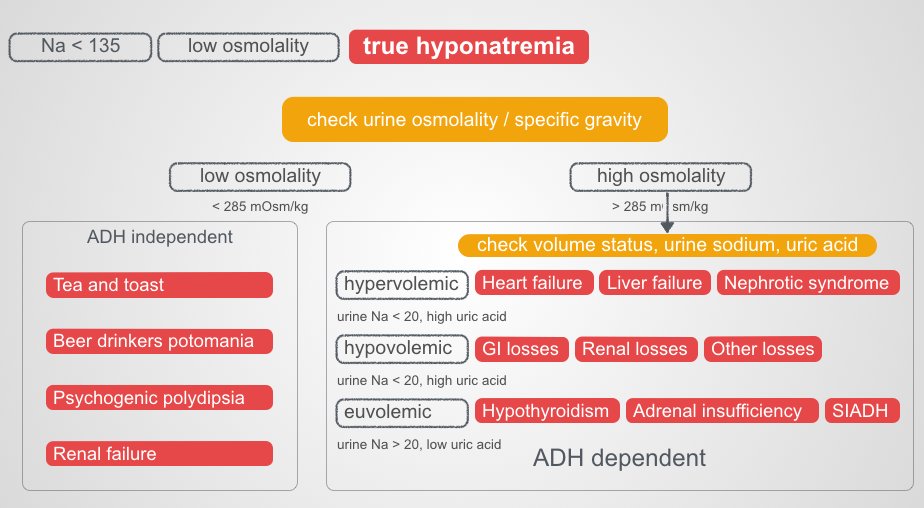I was consulted for hyponatremia.
The sodium was 122 and the patient was apparently asymptomatic.
A. We’re in the ER, so a liter of NS
B. Check serum osmolality
C. Careful exam to categorize the patient’s volume status
Serum osmolality 303
Urine osmolality 103
Urine Na < 20
Urine K 6
A. Serum osmolality should be low
B. Urine osmolality should be high due to the kidney retaining water
C. The urine Na is low, patients with hyponatremia should not be retaining Na.
D. Where’s my uric acid!
onlinelibrary.wiley.com/doi/full/10.11…
The best article on this is
Serum osmolality 303
Urine osmolality 103
Urine Na < 20
Urine K 6
Fin.







